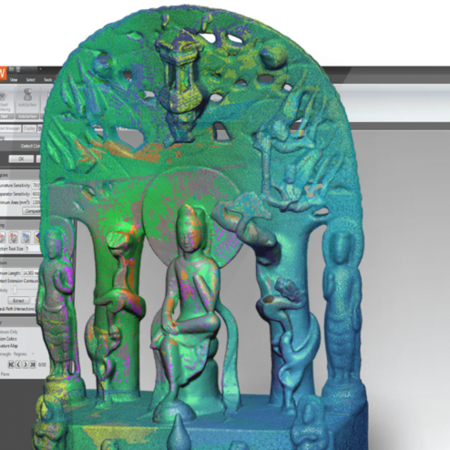When Milwaukee sculptor Frank Savage was asked to recreate one of his most elaborate pieces at four times the original size, he had a dilemma – how to increase size without losing design integrity.
Savage, an industrial designer for Harley-Davidson Motorcycles by trade, turned to Advanced Design Concepts (ADC), a 3D modeling and CAD service bureau, to help him come up with a solution.
ADC combined 3D reverse engineering with traditional CAD to provide an exact 3D model of the sculpture, which Savage can use to make larger replicas.
Creating an Original Sculpture
“Flame” is a limited-edition sculpture Savage is selling at art shows. The original piece is 10 inches tall and is made of cast aluminum and stone.
“The 2D sketch of the sculpture was somewhat inspired by modern day tattoo art and also by fire itself,” Savage says.
To create an original, Savage starts with a 2D sketch, then sculpts a model with aluminum rod and casting resin. The model is used as a pattern for a sand cast mold. Molten aluminum is then poured into the mold. The hardened aluminum is sanded and buffed by hand, then secured to its stone base.
It takes weeks for Savage to make a new sculpture, and it would take even longer to make a larger one that maintains the accuracy of an original.
“I turned to ADC to help me reproduce the original idea on a much larger scale because they had the technology to make an exact 3D replica of the piece,” Savage says.
A Streamlined 3D Scanning Workflow
Savage gave Senior Designer Greg Groth of ADC an original version of his Flame sculpture. Groth scanned it with a Perceptron ScanWorks system. The resulting 3D point cloud data was brought into Geomagic Wrap software from 3D Systems.
Geomagic Wrap is used for 3D reverse engineering, the process of automatically capturing a physical object and turning it into a digital model for design, engineering, mass customization and web-based marketing applications. The software enabled Groth to seamlessly reproduce the intricacies of Savage’s sculpture.
“These types of models are extremely difficult,” Groth says. “There are so many complex surfaces and rounded edges. One issue with the point cloud data on this sculpture is keeping the tips of each flame sharp once the file is polygonized. Geomagic Wrap allowed me to recreate those sharp features to maintain the integrity of the model.”




